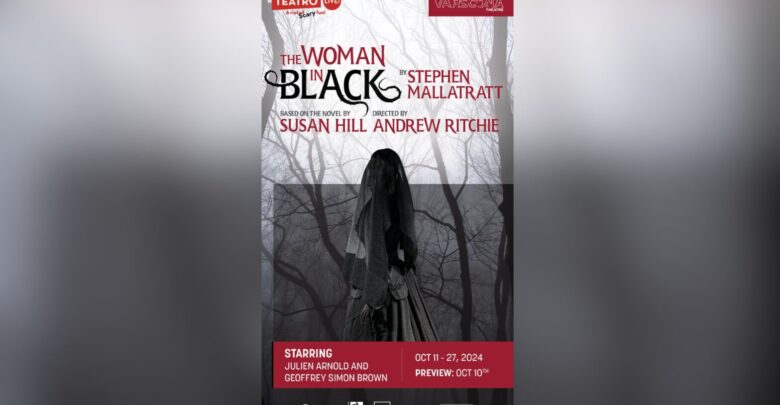Play review: ‘The Woman in Black’ at the Varscona Theatre
'The Woman in Black' masterfully combines meta-theatrical elements with a haunting narrative about grief and loss.
 Supplied
SuppliedThe Woman in Black directed by Andrew Ritchie intricately blends elements of a meta-play with a haunting narrative. It explores profound themes of grief, loss, and the impact of storytelling. This production is captivating from beginning to end through its compelling narrative, innovative use of space, and staging. The actors emerge from unexpected locations, creating an element of surprise that heightens the tension throughout the performance.
The play follows Arthur Kipps (Geoffrey Simon Brown) as he seeks to confront his traumatic past through theatre. With the help of a young, unnamed actor (Julien Arnold), he rehearses in an empty Victorian theatre. This is where he shares the haunting story of the Woman in Black. This ghostly figure, haunted by the tragic loss of her own son, brings misfortune to her village. This leads to the deaths of innocent children, including Kipps’s own son. As the narrative progresses, it culminates in a chilling revelation, highlighting that the presence of the Woman in Black continues to loom over Kipps’s life.
At its core, the play examines the complex effects of a mother’s love and pain, emphasizing the importance of voicing our deepest sorrows. Kipps, striving to share his story, carries the heavy burden of unresolved trauma. His struggle to process this grief through art, performance, and human connection highlights the transformative power of storytelling. It also reminds us that confronting our demons often requires the support of others.
The interplay between the character of Kipps and the unnamed actor is both compelling and poignant. Their relationship serves as a commentary on the art of performance itself. The line, “I implore you, sir, have sympathy for your audience,” encapsulates the heart of their dynamic. The portrayal of the story within a story adds depth, inviting the audience to reflect on the act of storytelling itself. As Kipps asserts, “this tale of mine needs to be told.” It becomes clear that the narrative serves not only as a recounting of events, but as an act of catharsis for Kipps.
The exploration of grief and the effects of tragedy within a community is particularly striking. The audience becomes entangled in a web of emotion, as the Woman in Black serves as a metaphor for unresolved pain. The chilling assertion that “every time you look at the ghost, a child dies” serves as a poignant reminder of the consequences of loss. It compels the audience to confront their own feelings of empathy and sorrow.
Overall, The Woman in Black is a remarkable production that successfully merges innovative staging with a deeply moving narrative. It not only entertains, but invites introspection on the nature of grief and the essential need to tell our stories.
The Woman in Black premiered at the Varscona Theatre from October 11 – 27.




